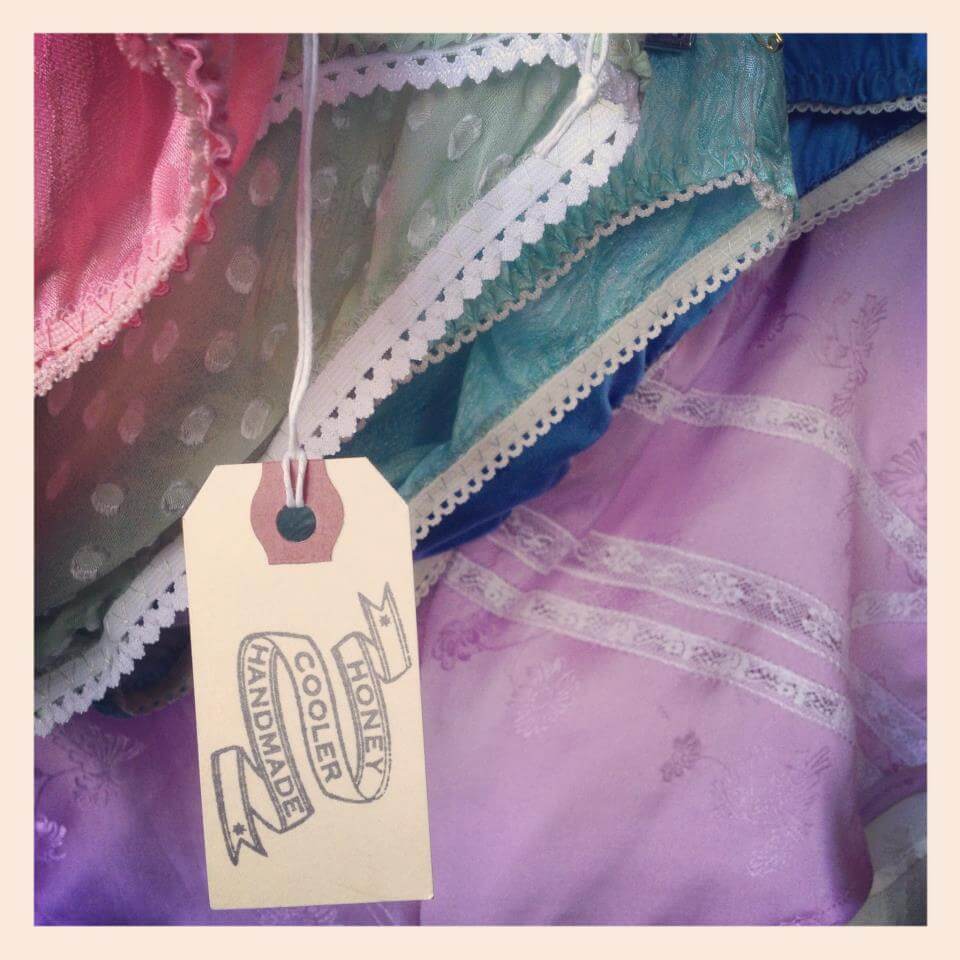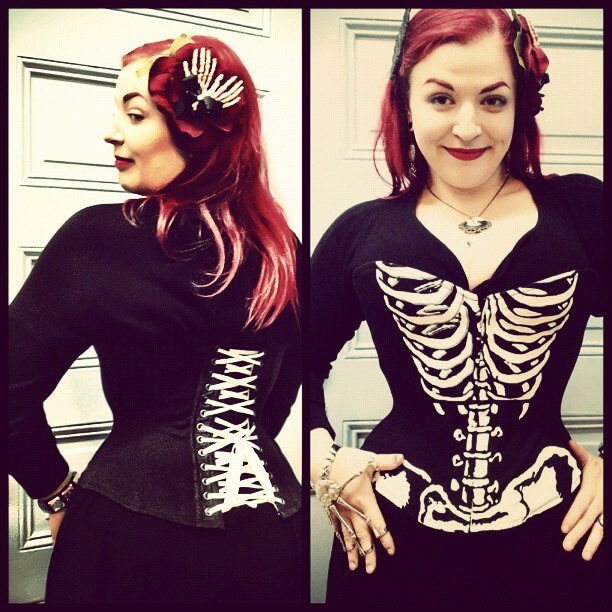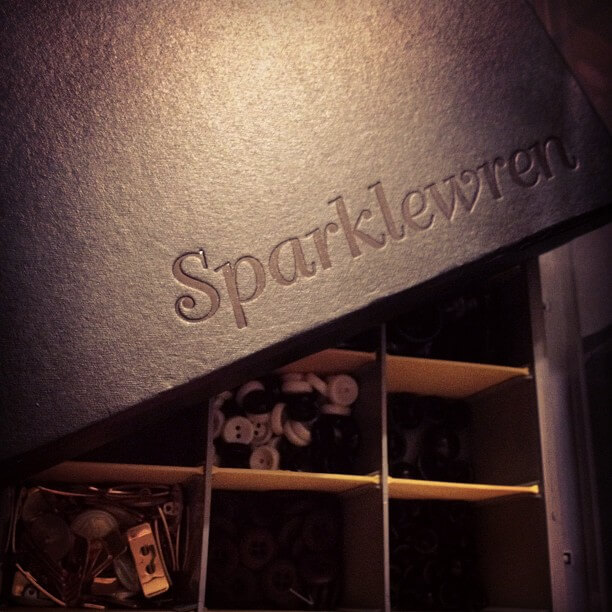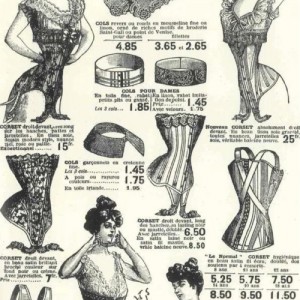What Is "Reasonable" Lingerie Pricing?

Model Victoria Dagger is contemplative, perhaps of the intricacies of retail pricing. Photo by Sam Guss. Corset by Sparklewren.
About a month ago, Cora (editor and founder here at The Lingerie Addict) got quoted in a Forbes piece entitled, "Made to Order Fashion Goes Mainstream." One thing that really stuck out to me was the author's repeated references to "reasonable prices." As an independent designer who crafts made-to-order corsetry, I have learned that pricing is a tricky, multi-layered business. Who is the arbiter of what is a "reasonable" price? What goes into determining the price for a product?
On Tumblr, it seems Cora is often asked for recommendations on purchasing a certain lingerie item for a "reasonable" price, a question she is invariably unable to answer as every customer has a different perception of what price is reasonable, which may or may not be in line with what is even possible for manufacturers.

Hangtag of Honey Cooler Handmade, an independent San Francisco lingerie designer with a singular point of view.
I have early memories of being in some clothing store with my father, who pointed to a price tag and commented on how low the production cost of the garment must have been compared to the markup. Markup, from a consumer standpoint, is treated almost like a dirty word, as if it exists solely to gouge customer pockets, but it's actually much more than that. I don't want to get too technical with you here, but when "cost" of a garment is mentioned it only covers the labor and materials to make that exact item and nothing that comes before or after.
From there you get the wholesale markup, which must cover all the overheads for making any and all garments, including not just space for production and storage of materials but also prototyping and the staff for design, production, and sales reps to retail outlets, fit models, etc.
Then the retail markup has to cover all the costs of getting the product to the consumer: the retail sales staff, their shop space, the difference on garments that will eventually be marked down, a margin for damaged or stolen goods, etc.

It takes a lot of work to get an item from a design sketch to a retail location (such as Jenette Bras in Los Angeles), who then has to do a lot of work to enable you to purchase it.
Lastly, there's this thing called "perceived value" --- what about an item makes people willing to pay (more) for it? A designer name (with associated training, vision, and brand history)? Unusual detailing? Country of manufacture? Organic fiber content?
Perceived value isn't a tax on gullible customers, but rather a value that is more difficult to directly quantify. Pricing is a funny thing --- an item priced too low may actually sell less than the same item at a higher price, because it is underselling its perceived value. Customers mentally look for reasons to support or decry the price of a thing.

Corset by Pop Antique featuring unusual construction and a custom screen print, on makeup artist/client Chrysalis Rose. Such design innovations are easier, yet more expensive, to implement in small-scale production.
Indie lingerie and corset designers, who are often one-woman operations or otherwise very small in scale, are in an awkward position because their costs are unavoidably higher, but their markup is much lower. We would have a very hard time selling our product at all if our markups weren't much lower than a comparable mass-manufactured item. And it's not just about sales and making money - for an indie designer, it's the ability to do something we love and are passionate about that makes it worth the effort and occasional heartache.
An indie designer may or may not have an expensive education in fashion (personally, I have a BFA and MFA, both in fashion), which they must pay back. An indie designer buys their materials in smaller quantities and therefore doesn't get the same price break. An indie designer often makes pieces one at a time, or at least has a much smaller production line than a factory. An indie designer (in America) must buy their own health insurance or pay medical expenses out-of-pocket when they occur. An indie designer doesn't get paid sick leave or vacation time.
All businesses must pay for a business license and other legal expenses. An indie designer's prices may not be comparable to a big company's, but that doesn't necessarily mean they're unreasonable. Indie designers, because of their smaller production scales, often have more room to innovate and play or cater to a specific niche. Small-scale in-house production can result in higher quality control. This is the perceived value factor of independent design.

Beautiful packaging, such as Sparklewren's custom debossed black boxes, really add to the prestige and perceived value of a luxury label, turning the purchase into an experience rather than a simple product. (The button collection underneath is my own.)
These days, the more I learn, the more I gravitate towards the thinking that I don't know the true costs and work of any company besides my own, and therefore everyone is entitled to charge what they wish - and clients are entitled to pay it or not.
In my mind... most prices are reasonable. They're just not a good fit for all demographics. A client with back issues may place a higher value on a posture-supportive corset, just as a full-busted woman may place higher value on a well-fitted bra. Someone with a hectic life may value lingerie that is easy to care for and has good longevity, whereas someone who goes shopping and refreshes her wardrobe often, and is trend-conscious, may instead value fad fashions and low price points.
What do you value when you go lingerie shopping? What brands do you think offer the best value for the price? Did this post give you any insight as to how retail pricing works? Share your thoughts in the comments below. If you're interested, I would be happy to write a follow up piece on corset pricing in particular.







